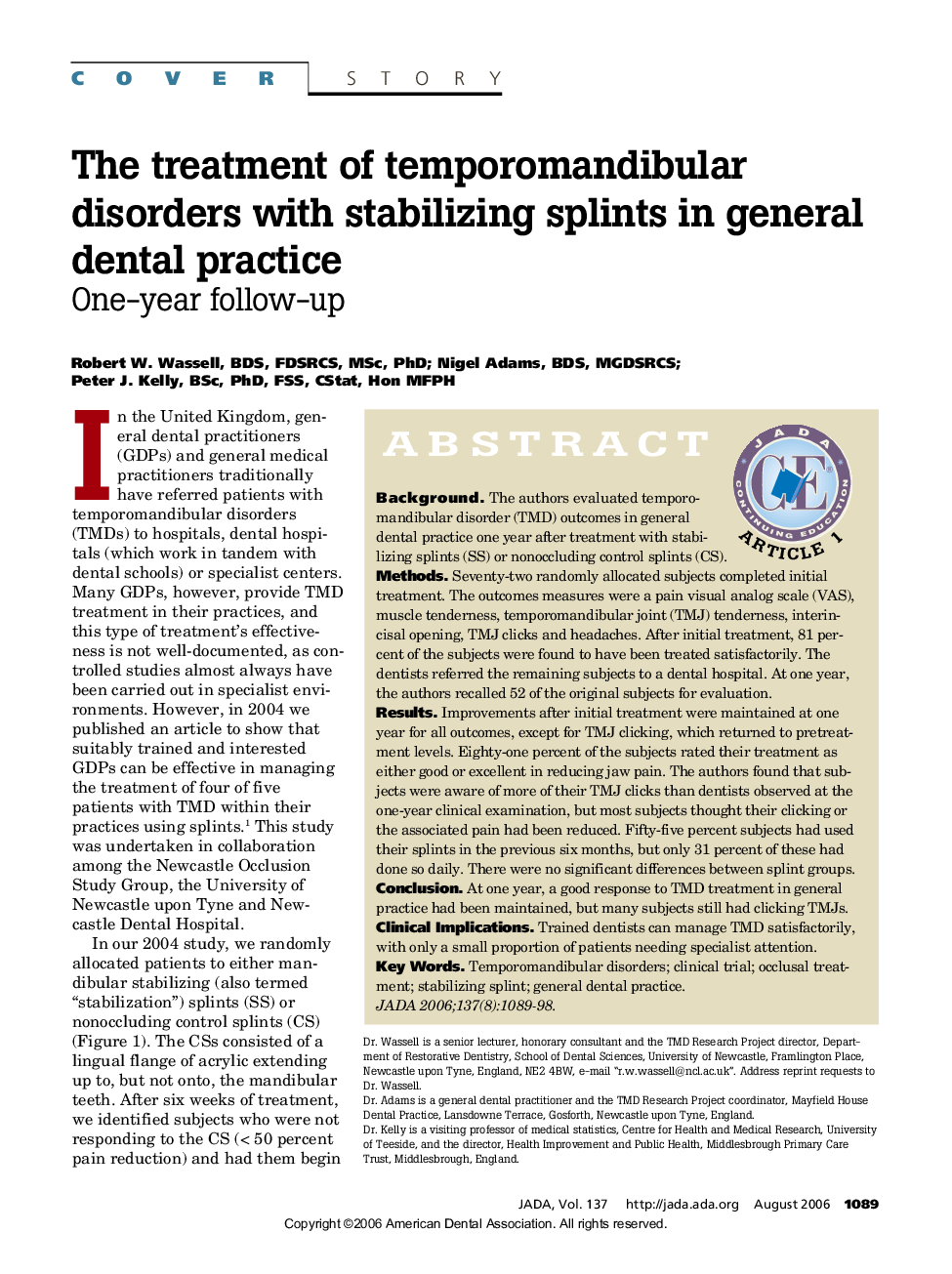| Article ID | Journal | Published Year | Pages | File Type |
|---|---|---|---|---|
| 3140118 | The Journal of the American Dental Association | 2006 | 10 Pages |
ABSTRACT BackgroundThe authors evaluated temporomandibular disorder (TMD) outcomes in general dental practice one year after treatment with stabilizing splints (SS) or nonoccluding control splints (CS).MethodsSeventy-two randomly allocated subjects completed initial treatment. The outcomes measures were a pain visual analog scale (VAS), muscle tenderness, temporomandibular joint (TMJ) tenderness, interincisal opening, TMJ clicks and headaches. After initial treatment, 81 percent of the subjects were found to have been treated satisfactorily. The dentists referred the remaining subjects to a dental hospital. At one year, the authors recalled 52 of the original subjects for evaluation.ResultsImprovements after initial treatment were maintained at one year for all outcomes, except for TMJ clicking, which returned to pretreatment levels. Eighty-one percent of the subjects rated their treatment as either good or excellent in reducing jaw pain. The authors found that subjects were aware of more of their TMJ clicks than dentists observed at the one-year clinical examination, but most subjects thought their clicking or the associated pain had been reduced. Fifty-five percent subjects had used their splints in the previous six months, but only 31 percent of these had done so daily. There were no significant differences between splint groups.ConclusionAt one year, a good response to TMD treatment in general practice had been maintained, but many subjects still had clicking TMJs.Clinical ImplicationsTrained dentists can manage TMD satisfactorily, with only a small proportion of patients needing specialist attention.
